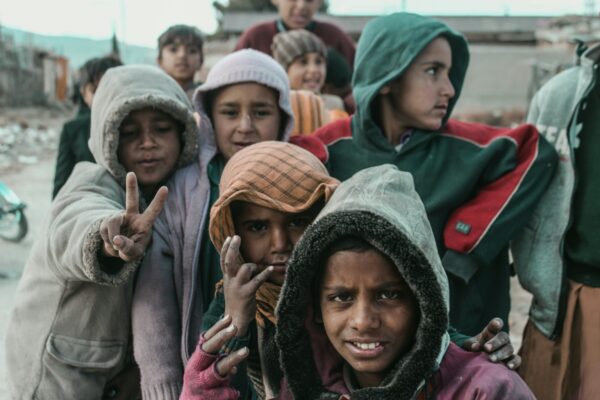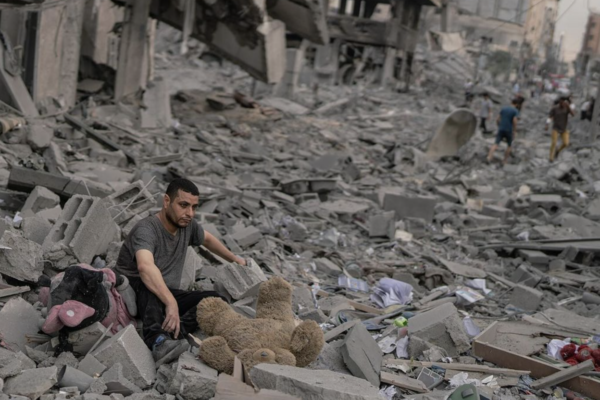“Religious extremism is not an excess of religion, but rather a lack of humanity.”
“Religious extremism is not an excess of religion, but rather a lack of humanity.”
This is the second of a two-part series on finding cures for the ideologies behind religious and political extremism. In the previous piece, we discussed how to define the term ‘extremism’ and the role of the media in this narrative.
The right wing has strengthened its hard-line stance by using the means of violence; attacks on foreigners, abortion clinics and places of worship have become a common practice. Arie Perliger, the director of terrorism studies at the Combating Terrorism Centre, wrote in his report “Since 2007, there has been a dramatic rise in the number of attacks and violent plots originating in the far-right of American politics.” Similar statistics can be found elsewhere in the world such as Europe where violence has increased against refugees. According to a report by the Telegraph in 2016, arson attacks have increased on refugee camps to seventy-five from a mere five in the previous year.
What suffers from the rise of extremism in both wings, is the voice of the political centre.
President Obama of United States in 2014 took a central stance on illegal immigrants crisis, proposing a plan to legalize around five million illegal immigrants. The requirements for this initiative included residency in the U.S. for at least five years, background checks and several other relevant conditions. However, this was met with firm opposition revealing the decline in centralism politics in the United States. The fading centralist approach has left the general public to choose between two political extremes, whom they do not completely agree with, indirectly sponsoring extremist views in politics and expanding the divide within the general populace.
Political extremism is often found to promote religious extremism. Religious extremism, however, does not immediately relate to political extremism, rather the consequences of it. Michelle Roya Rad, a professional psychologist, generalizes the reasons for a commoner to turn extremist and harm others:
“…a few of these reasons are the world’s lack of a moderate, moral and fair role model, in addition to a lack of access to proper education in many places, lack of basic resources for many people, too much repression, autocratic rulers, closed minded and egocentric leaders, personality factors, family upbringing, a tarnished sense of pride, among many others.”
This clarification can be used to explain the situation of religious extremism in Pakistan and the middle east. The Pakistani militants were formed because of a radical decision made by a dictator in Pakistan who believed in himself to taking the right course of action for the country. Similarly, the rise of Daesh came from the huge political divide in Iraq between the Sunnis and the Shiites who were mistrusting of each other. Boko Haram flourished in Nigeria because of the split caused by political, economic and territorial contests between the population. Most, but not all, of religious extremism can be traced back to some drastic political action or event which caused a divide between the people.
Other than from political reasons, religious extremism can also be motivated by radical preachers and ideas too. Matthew C. Ogilvie, a theology professor at the University of Notre Dame, argues that extremist groups exploit religion. He gives the examples of White Aryan Resistance and the Christian Identity Movement, both which promote racist theology and have carried out violent attacks including that of Oklahoma City. The Jewish Defence League (JDL) is another organization which exploits the Jewish religion to spread its extreme ideology, such that it emphasizes acting in response to religious beliefs. They have claimed responsibility for the bombing of the San Francisco office of Bank Melli Iran as well as several gasoline firebombs hurled at various occasions. They are driven by their no-tolerance policies and extreme views on protecting Judaism at all costs.
Religion, however, cannot be blamed for the extremism and terrorism.
As it is a common practice for the most major religions’ clerics and leaders to come out, join hands and condemn all terrorist acts. Only recently, Pope Francis had a meeting in Assisi with other leaders of major religions after which they declared a vow to oppose terrorism in God’s name. Vernon Schubel, a Professor of Religious Studies and Asian and Middle Eastern Studies at Kenyon College, explains why there is so much difference between those who act out as an anomaly and their head of faith in his article for the Huffington Post:
Religious extremism is not an excess of religion, but rather a lack of humanity. The Christians who taunted us at the town square did not do so because of something essential and undeniable in the Christian faith. They did so because they refused to recognize the humanity of those with whom they disagreed. When Serbian militias slaughtered Muslims in the former Yugoslavia, it was not because of something cancerous at the heart of Eastern Orthodoxy. They did so because they no longer saw their Muslim neighbours as equally human. When Buddhist nationalists attack Rohingya Muslims or Hindu mobs burn the shops of Muslim merchants their extreme actions are not rooted in their Buddhist or Hindu religions. The same is true for Islam. The problem with those Muslims who understand their faith as being primarily about exclusion, rather than inclusion; who commit acts of violence against those with whom they disagree; who proclaim themselves as the sole purveyors of religious truth is that they have willing ignored the calls within their own tradition to recognize the humanity of “the Other”—the stranger— and treat them with love and respect.
Is condemning actions of extremists ever enough?
The condemnation of the actions of religious and political extremists is not regrettably enough. However, it is the first step of three. A lot more effort must be put in to counter the extremism throughout. The second phase revolves around the idea of tackling extremism which exists today Andrea Bartoli, the Founder and Director of the Center for International Conflict Resolution at Columbia University, provides the several approaches in his article “Dealing with Extremists”:
1 – Elimination
Simply the use of information, the law, and force to identify, locate, and apprehend (or destroy) extremists or key leaders of extremist groups. Sometimes this entails using legal manoeuvres to tie up economic resources, thereby crippling the ability of such groups to organize and function. These tactics have been used by the Southern Poverty Law Center to undermine the operations of white supremacist groups in the United States.
2 – Divide and conquer
When one group is able to infiltrate the opposing side’s extremist groups or establish relationships with ambivalent members of those groups, they can begin to create a wedge between members. Such schisms can fester and be the undoing of groups, particularly when conformity and cohesion are prized and betrayal is punished by extreme measures.
3 – Expanding the middle
In situations of protracted conflict, you often find moderates (pro-negotiation camp), hardliners (anti-negotiation camp), and extremists (anti-other camp) on each side. This strategy is an active attempt to establish the conditions which grow the more moderate (and even hard-line) segments, thus attracting the more moderate members of extremist groups toward a position of tolerance and away from a commitment to the destruction of the other.
4 – Intragroup work within polarized groups in intergroup conflicts
Rarely utilized, this approach would encourage and facilitate intragroup dialogue and problem-solving in an attempt to actively address the concerns of more extreme members and reduce the incidence of splinter-groups. An “organic” example of this strategy could be found in any highly organized structure such as the Italian Communist Party fighting the Fascist regime. Distinctions between “hawks” and “doves” are a permanent feature even in extremist groups.
His approaches, however, do have their weaknesses as he himself points out in the article. For example, when using the method of Isolation, which is an attempt to create mistrust between top leaders of an extreme group, it is more than likely for the extremist groups to become more unified in their own groups while creating more hate for the other if the approach fails. Nonetheless, they do provide the second step forward into dealing with the extremism which is present in the world today.
The final step to minimizing the violence of both, political and religious extremism, is the prevention of its prevalence in the generations to come. It all boils down to the upbringing of the children and the behaviour of the parents. Children looking for a source of identity often fall into the trap of extremism according to Johnathan Russell, Quilliam’s Political Liaison Officer. He argues it is the parents or guardian’s responsibility to influence the child with positive messages and valuing them and their rights as equals. He further goes on to advise parents and guardians to take active participation in the lives of their children, acknowledging their thoughts and sense of identity and then guiding them to the path of open-mindedness.
There are more and more people falling victim to an epidemic that is extremism. It must be managed with persistent resistance and precision. Otherwise, it is and will push thriving countries into the dreadful conditions that my country has fallen for. Extremism is a disease that endangers the world unlike any other threat in history. As Theresa May once put addressing her nation, “We must face down extremism in all its forms. We must stand up for our values. Because, in the end, as they have done before, those values, our British values, will win the day, and we will prevail.”
by Syed Areeb Abbas Rizvi





